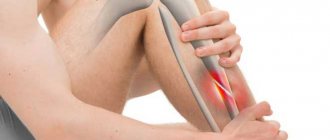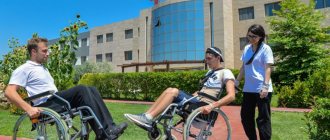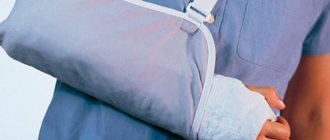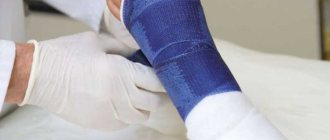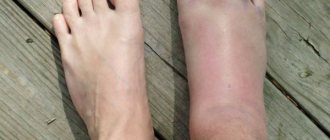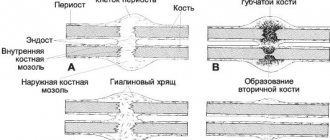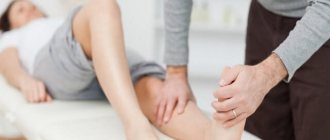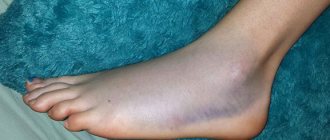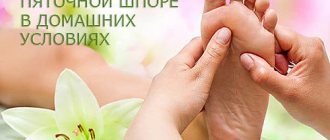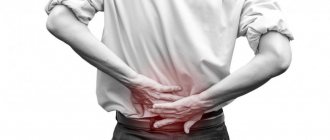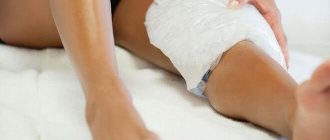A bone fracture is a break in the integrity of a bone due to trauma. Fractures can be open and closed, without or with displacement of the fragments, one- or two-sided, multiple and fragmented, twisted and impacted. Fractures of the left and right radial bones, fingers, humerus, lunate and scaphoid bones, and hand occur more often. Massage of the arm after a fracture should be carried out immediately after applying the plaster, on the second or third day. Massage above or below the cast; you can massage under the cast. Massage the shoulder girdle (collarbone and scapula), healthy arm.
- 5 Number and duration of massage sessions
- 6 Self-massage technique
- 7 Conclusion
- 8 Forearm and hand massage: Video
While the arm is still in plaster
A fracture is a wild injury that unnaturally prevents the normal function of a limb. If it occurs, it means that the breaking force or damaging blow was too strong. Or it may be that the condition of the bones in the absence of proper nutrition is more to blame. Be that as it may, abruptly immobilizing a hand in this manner causes a shock to the whole organism.
The correct fusion of bones under the cast significantly depends on how the bandage is applied. It is mistakenly believed that no other actions can affect tissue rehabilitation. However, therapeutic hand massage is also necessary after plaster fixation. It is carried out above and below the cut of the bandage after a couple of days.
The need for gentle massage with a cast is to avoid stagnation (hypotrophy) in the muscles. It is necessary to stretch the free areas of the arm to improve blood circulation. It is also worth tapping on the bandage to create vibration in your hand.
However, you should not try to put your fingers under the plaster cast. This can cause displacement of parts of the broken bones. It is clear that this is a contradiction to the very purpose of the fixation procedure. Acupuncture with its targeted method of influencing the blood vessels of the skin and muscles is considered useful. This procedure is expensive and its use must be weighed against the real importance for a particular fracture case.
Massage is also useful in the area of adjacent parts of the body - collarbone, sternum, shoulder blade. It is good to massage the cervical spine.
Therapeutic massage after a femur fracture
A femur fracture is a serious condition that requires a special approach. With such an injury, most of the procedure involves massage of the back and pelvic girdle. Then carefully knead the muscles of the lower thigh, lower leg and foot. The total duration of the procedure is about 25 minutes.
When the fracture has already begun to heal, and x-rays show that a dense bone callus has formed in its place, you can move on to more active action. If the plaster has not yet been removed, at about the 3rd week of the disease, holes can be made in it and the massage can be supplemented with vibration applied over the fracture area. Vibration improves blood flow in the limb and accelerates the process of bone fusion.
When the plaster has already been removed, the massage is performed using the same technique, but the fracture zone is no longer avoided as it was before.
Medium-intensity treatments are performed there, and superficial stroking and rubbing are of great importance, promoting the drainage of blood and lymph and helping to fight swelling. Since there may be trophic skin disorders in the area of damage, massage should be done with the use of additional products - creams and oils that have a regenerating effect. Learn real medical massage courses in St. Petersburg
Main sessions
The most effective massage begins, of course, after removing the plaster frame. Massage techniques are common: kneading, rubbing, pressing. More severe methods are also possible - drumming alternately with the edges of the palms, fingertips, pinching, twisting. However, any type of massage used should begin with stroking techniques. It should end with them.
Technically, massage is selected strictly depending on the severity and location of the fracture. Of course, the factor of displacement of broken bones is important. If it is present, you cannot massage sharply or press uncontrollably. You will need to monitor muscle tension and noticeable spasms in them.
A specialist - an orthopedist or traumatologist will definitely check how things are with joint mobility after long-term fixation.
The fusion of tissues during fractures depends on various processes in the body. This includes metabolism, that is, the necessary balanced nutrition, and the state of the nervous system. Therefore, the massage procedure must be approached with a powerful accompanying component of treatment. It affects not only the processes of tissue regeneration, but also the general tone of the patient. And this is the main thing for any disease.
There are still weeks, or even months, ahead until complete rehabilitation after the injury. A limb immobilized for a long time is taken out of normal functioning. It has abnormal blood circulation and impaired metabolism.
Therefore, the rules for conducting massage sessions should cover all possibilities for improving the patient’s condition. At the same time, they are designed to cut off possible abuses, erroneous and unacceptable methods and techniques.
Number and duration of massage sessions
How many massage sessions are needed and their duration depends on each specific case, on the type, location and severity of the fracture. The duration of the fracture and the presence or absence of complications play a role.
The decision on the number and duration of sessions is made by the attending physician (orthopedist-traumatologist). It is advisable to start the massage from the moment of injury and end at the end of the rehabilitation course, after removing the plaster cast. This is approximately three months.
First, the massage session lasts 5-10 minutes, then up to half an hour. Start with once every two days and increase to two or three times a day
There are three periods of massage for fractured limbs.
- The first period corresponds to the acute phase of the disease. This is a period of immobilization (plaster cast). Massage begins on the second or third day after the fracture, massaged above or below the plaster cast, duration 5-10 minutes daily, subsequently increased to 15-20 minutes.
- The second period begins after the plaster cast is removed. The massage begins immediately, the duration and number of sessions depends on the location of the fracture. Usually the procedure lasts 5-10 minutes, once a day. First massage the undamaged tissues, then the injured area.
- The third period is during rehabilitation after a fracture. The duration of the procedure is approximately 30 minutes, daily. All tissues of the injured limb are massaged.
Analysis in parts. Hand massage
If the hand is fractured, it is recommended to start the massage from the shoulder, moving it gradually lower. After this, they focus on the area above the wrist, using soft, long stroking movements. Then you can move on to the brush itself.
Any pain during this massage is eliminated. If the patient reports the occurrence of sensitive unpleasant feedback in the hand, this is a signal to stop the massage.
When practicing with a hand, a thorough knowledge of the anatomical structure of this part of the hand is required. You will also need to work on the nerve-fiber system - special pressure and stimulation techniques.
Radial bone massage
The radius is the most likely location for an arm fracture. But fusion in this place occurs, as a rule, more intensely. You will also have to massage, starting with a good kneading of the shoulder, gradually moving lower, grabbing the hand as well. The area around the fracture is massaged very carefully, taking care to restore blood circulation. In a healthy hand, fingers are developed to increase the activity of their joints.
When massaging the radius, stroking techniques with grasping and circular movements, rubbing with the edge of the palm with cross massaging, circular kneading with movements of the fingertips, rubbing with shifting of the skin of the massaged area, kneading pinches can be used.
Types of hand surgeries
The following methods are used to eliminate:
- ruptures, injuries, other defects of the flexor and extensor tendons of the hand;
- pinched nerves;
- treatment of fractures of bones and joints of the hand and forearm;
- correction of improperly fused bones and soft tissues;
- removal of hygroma (ganglion) on the wrist;
- removal of foreign bodies of the hand;
- various diseases of bones, joints, soft tissues;
- elimination of tumors of any form.
If you have been scheduled for surgery, but you want to know more about its implementation or you have any other questions about hand surgery, you can ask them by calling +7 (905) 640-64-27 . Or contact me by sending a message from the Contact .
Main shoulder massage
The diaphysis connects the elbow and shoulder joints and is the longest bone of the upper arm. When massaging this area, you should not use chopping techniques or tapping. It is necessary, without lifting your hands, to stroke along the entire length of the shoulder from the beginning of the bone to the site of the fracture.
READ ALSO: Toe joints hurt
The best method of massage after a fracture of the diaphysis of the shoulder is to start from the collar area. In this case, the patient sits at the table, resting his head on his arms crossed on the tabletop. In this position, massage the cervical and thoracic spine, rubbing and kneading with light pinches.
Benefits of massage
After a fracture, a plaster cast is placed on the arm, which leads to loss of muscle mass and decreased muscle activity. As a result, muscles weaken and joints lose mobility. The purpose of massage to restore a hand after a fracture is:
- pain reduction;
- restoration of conductivity of nerve endings;
- removal of puffiness;
- prevention of muscle tissue atrophy;
- relieving muscle spasms, restoring and maintaining normal muscle tone;
- activation of metabolic processes in tissues;
- acceleration of regeneration processes and formation of bone callus;
- improving the movement of biological fluids and energy exchange.
Massage procedures also improve skin condition, relieve fatigue, and relax.
The method of performing massage during the rehabilitation period for a broken arm depends on the location and type, and the degree of tissue damage. Sessions can be performed 1-2 times a day for 10-15 minutes. If pain occurs, stop the procedure immediately, and if repeated discomfort occurs, consult a doctor.
Massage after a fracture of the radius of the arm at home and other massage techniques have their own subtleties and rules:
- during the session, be sure to develop loose joints by bending and turning;
- All techniques are performed only with your fingers and without pressure. Any force is prohibited;
- neighboring areas are worked on even after the plaster is removed;
- the direction of movement is from the fingers to the shoulder joint, unless otherwise indicated in the technique.
The first session can be carried out already 2-3 days after the injury, if it does not apply to complex cases. For a speedy recovery and to avoid negative consequences, traumatologists and rehabilitation specialists advise combining massage with therapeutic exercises.
Shoulder neck massage
A dangerous injury is a fracture of the humeral neck. That is, the places where the terminal roundness of the humerus passes into its main part, the diaphysis.
In this case, the patient lies on his stomach, placing his hand on a flat surface near his head. The massage technique here is combined. Starting with light rubbing, increase the intensity of movements, then gently apply the edge of the palm. You can use twisting, but be sure to match the strength of the massage with the patient’s feedback. At the slightest manifestation of pain, the massage stops.
Elbow massage
A fracture in the area of the elbow joint is associated with special rehabilitation difficulties. The anatomy of this bone articulation is quite complex. In essence, it is a combination of three simpler joints in a common capsule. And it is associated with tricky attachments of muscle ligaments and tendons. The articular circulatory network is formed here by several arterial branches.
When performing a massage after removing the cast, the elbow should be kept bent in its most natural curve. You should massage first with your thumbs, starting from the unaffected area. The movements are circular, easily rubbing and warming.
Then the ligaments on both sides of the elbow are kneaded. The back side can be covered with your palms, making stroking movements up and down. Use the technique of finely pinching muscle tissue. Gently bending and straightening the arm at the elbow joint is also useful for developing its mobility.
Special exercises after removing the plaster cast
Life is movement, and if tissues, organs and systems remain motionless for a long time, their hypotrophy (extreme exhaustion) occurs, and subsequently atrophy (loss of the ability to move). To prevent this from happening, it is necessary for everyone, even the seriously ill, to make minimal movements.
How to find out how disobedient a hand has become after a fracture? Does the injured hand clench into a fist? Throw a tennis ball lightly at the wall and try to catch it. Try tearing a sheet of paper into small pieces, or performing any simple procedure with your injured hand (combing your hair, eating soup with a spoon). This will be the answer to the question.
Examples of special exercises after removing the plaster cast:
- "Playing the piano." While sitting at the table, place your injured hand on the surface of the table and begin to move your fingers, as if playing the piano. Slightly lift your injured arm off the table and repeat the exercise again.
- Take two ping-pong tennis balls in your injured hand and begin to move them around, being careful not to drop them.
- While sitting, place your palms together and tilt them left and right towards your wrists.
- Take a piece of plasticine in your palm and try to knead it.
- Clap your hands behind your back and in front of you.
- Try to put together puzzles, sort out beads or rosaries.
- Handicrafts (embroidery, knitting) and drawing are useful.
Any exercises with an injured hand should be carried out as carefully as possible, because it is still very vulnerable!
Home tricks
The patient is recommended to independently massage the healed fracture with his healthy hand. The benefits here are a more comfortable and relaxed home environment.
But still, permission from a traumatologist is the most important condition for self-massage after a fracture.
It is necessary to perform the massage while sitting on a regular chair and turning towards its back. At the same time, your arms should be able to fall freely and relax.
As always, you need to start with stroking actions with your palms and light rubbing. We are talking about the joints of the hand, the wrist joint. First, massage the upper part of the arm - shoulder, forearm, gradually descending lower.
Self-massage with one hand is also a serious strain on her joints. Do not overdo it with efforts, since the condition of the injured limb is affected by the general tone of the body’s motor system. To make the work of your healthy hand easier, you can use a special massage soap.
There are creams and ointments developed for this purpose. The Shiseikan warming balm has a good composition, which uses soothing and stimulating esters of mint, fir, and horsetail. This product is used both for massage and to relieve inflammatory processes: https://mirra.ru.com/cosmetics-for-everyday/balzamy-celiteli/balzam-razogrevayuschiy-shiseykan.html?tracking=5c641d96389d1.
Self-massage technique
Self-massage of the wrist joint after a fracture is performed by the patient himself, with a healthy hand. It is carried out from the bottom up, that is, from the fingertips to the shoulder girdle area. Self-massage begins with stroking, then rubbing occurs and ends with stroking again.
Massage all surfaces of the injured area: external, internal and lateral. Session duration is 15-30 minutes, daily.
During self-massage, the patient can use massagers made of wood, jasper, jade, tourmaline, and metals. For a better self-massage procedure, you can use baby or massage soap with the addition of essential and aromatic oils. These supplements have a wound-healing and anti-inflammatory effect. To relieve tissue swelling, special heparin-based ointments are used.
Self-massage is performed by the patient in a comfortable home environment, at any convenient time. Taking into account his own feelings, the patient himself chooses the intensity and force of pressure during the session.
Misconceptions about massage
In order to correctly perceive the effect of massage procedures, let’s take an interest in the physiology of fractures. The existence of misconceptions about the effects of these injuries on the body requires the debunking of some myths.
So, many people tend to think, for example, that when an arm is broken, the limb is completely immobilized. And if it is possible to bend it, then there is no fracture.
This is a completely wrong idea. After all, when a bone is broken, the soft tissues and the main nerve endings remain connected to each other. Therefore, the victim is able to move his arm, which can lead to dangerous displacement of the joints. The main symptoms remain visually detectable deformation of the limb, its swelling, and pain.
This must be remembered during massage, since the immobilized arm does not hurt after the cast is removed. And pain may appear as an indicator of excessive effort from massaging.
Some also believe that a fracture of the hand or fingers can be endured without contacting a traumatologist. The danger of such a misconception is that, given the complexity of the structure of the hand, it is difficult to predict the result. It happens that it is possible to do without plaster. But it is unlikely that it will be possible to avoid deformation of the small metacarpal bones and phalanges without fixation.
Another misconception that is harmful to the perception of massage is the belief that it strengthens bones. After fusion, they say, the bones are stronger than before the fracture. This is not true, because a fracture injury never goes away without a trace. However, the effectiveness of the massage sessions greatly determines whether the bones will regain their previous strength. After all, we are talking about the blood supply to recovering cells.
